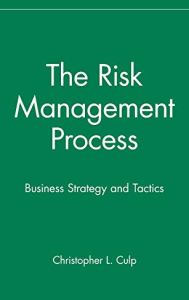Join getAbstract to access the summary!

Join getAbstract to access the summary!
Christopher L. Culp
The Risk Management Process
Business Strategy and Tactics
Wiley, 2001
What's inside?
Risk energizes companies, but such power surges can be hazardous. Here’s how to protect yourself from getting zapped by using strategic risk management.
Recommendation
Christopher Culp definitively combines a thorough reference work on company-wide risk management with a sweeping discussion of the best hedging practices. Since this is also a textbook, you’ll find the kind of math that would make even Einstein sweat. But, as the author notes, he’s written this book for senior managers, so you have a note from the teacher that you can skip the math and statistics if you have a staff for that. Instead, apply your executive thinking skills to absorbing Culp’s excellent lessons in risk management theory and practice. getAbstract.com recommends this book to senior managers and directors - in other words, any executives who create, implement or supervise risk management strategies.
Summary
About the Author
Christopher L. Culp is Managing Director at CP Risk Management LLC in Chicago and is an Adjunct Associate Professor of Finance at the University of Chicago. A former President of Risk Management Counseling Services, Inc., and senior examiner in the Supervision and Regulation Department of the Federal Reserve Bank of Chicago, Dr. Culp is a managing editor of Derivatives Quarterl and Senior Fellow in Financial Regulation with the Competitive Enterprise Institute in Washington, D.C. He holds a Ph.D. in finance from the Graduate School of Business of the University of Chicago and a B.A. in economics from Johns Hopkins University.

















Comment on this summary